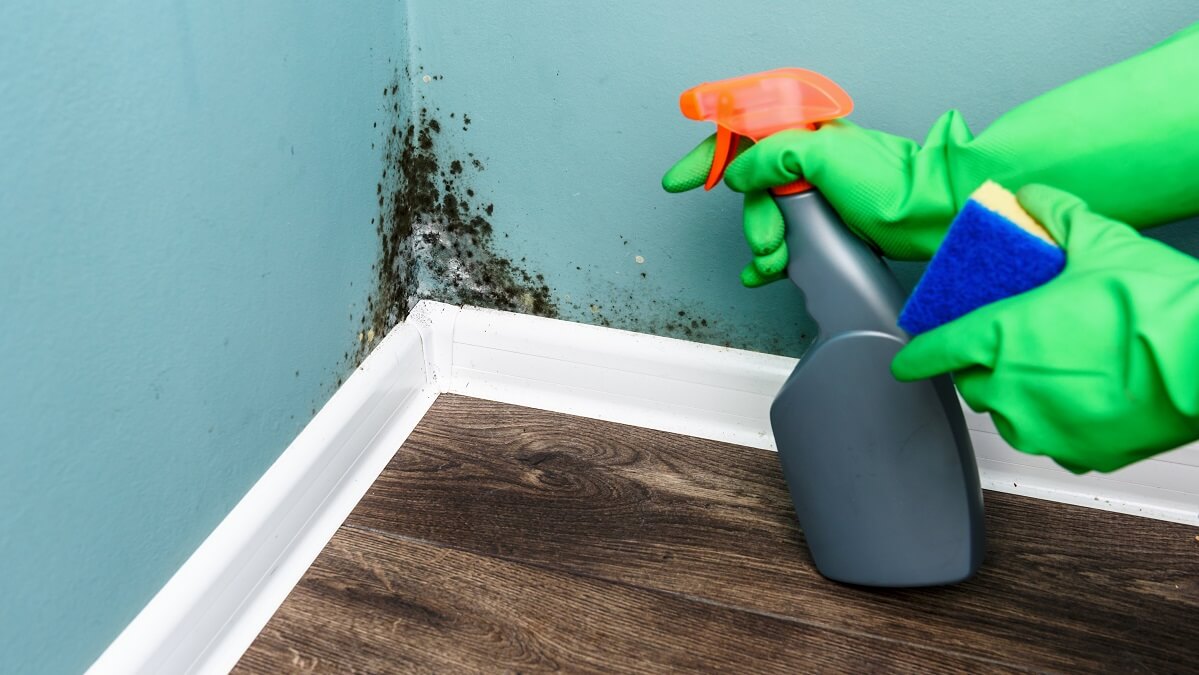Mould in your home isn’t only unsightly, it’s also a health issue. Poorly ventilated and damp areas are perfect breeding places for mould. But what exactly is mould? And most importantly, how can you remove it for good?
What is mould?
Mould is part of the fungi family and is present almost everywhere, both indoors and outdoors. Since it thrives in moist and dark areas, it commonly appears on walls, ceilings, carpets, between tiles and in insulation material and wood. Wherever moisture accumulates, mould can occur. Many types of mould exist and all come with potential health problems.
What are the possible health risks?
Mould reproduces via tiny particles in the air called spores. If these spores are inhaled by people who are sensitive or allergic to them, health problems can occur. On the low end of the scale, reactions can include a runny or blocked nose, wheezing and irritation of the eyes or skin. For people with asthma, inhaling mould spores can cause an attack. People with a weakened immune system, some diseases, allergies and breathing conditions may be at greater risk of an infection, particularly in the lungs.
Note: Mould infections are very rare, so it’s important to note that most people will not experience any health problems from coming in contact with mould.
How to get rid of mould in your home
Bring in the light and air
Mould cannot grow in dry and brightly lit areas, so improving ventilation and light is an important first step. Open windows and be sure to have ventilation fans on when showering, cooking, doing laundry and drying clothes.
Kill mould on tiles and grout
To remove mould on tiles, grout and other surfaces, you need the right product.
For routine clean-up of mouldy surfaces, use a mild detergent or vinegar diluted in water (four parts vinegar to one part water).
If the mould is not easily removed, use diluted bleach in water (250mls of bleach in four litres of water).
Ensure the surface is completely dried once cleaned. Absorbent materials, such as carpet, may need to be professionally cleaned or replaced. When using bleach, always open windows and use protective equipment – rubber gloves, safety glasses and shoes.
Read: How to manage knee osteoarthritis
Replace silicone
If you’ve noticed mould building up on silicone corners and around showers and baths, it’s time for action. Often, mould on silicone means the wrong type of silicone was used and you may need to have the silicone replaced. You can buy a commercial silicone remover and then reapply a bathroom-quality silicone, which contains a powerful fungicide to help prevent mould growth.
Repaint ceilings and walls
Mouldy ceilings and walls are best repainted with a mould-resistant paint. First, clean the areas with a soap or bleach solution, remove any peeling paint and repair any cracks or holes. Allow to dry, then repaint.
Note: If mould exists in walls, you should try to locate the source, otherwise it may keep returning even if you repaint.
For more information about mould in the home, visit health.nsw.gov.au.
Do you have any tips on combatting mould? Share them in the comments section below.


My understanding is that bleach does not actually “kill” mould but removes the colour of it and removes the bulk of it but that it will still regrow. Some have argued that a diluted Oil of Cloves mixture is effective in both removing and killing the spores. Anyone else heard this idea? Worked in my caravan very well and also on leather boots.
Bleach, as purchased in supermarket is not strong enough to kill mould. It just does what it says….bleach. Bleach also starts losing its potency once bottle has been opened.
Isopropyl alcohol 60 or 70% should kill mould.
Clove oil should also work apparently.